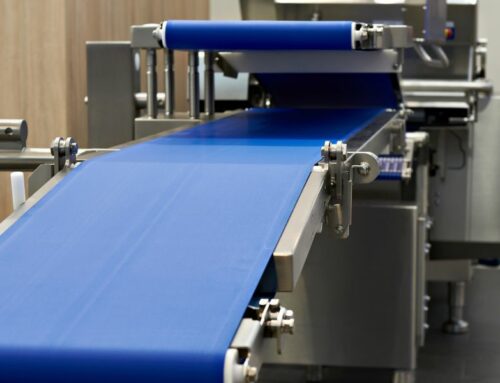
Conveyor belts are essential components of numerous industries. They play a vital role in moving industrial goods and products from one location to another. Hence, there’s a need for them to function at their maximum level.
As important as conveyor belts are, they can fail, break down, or get stuck at some point, which can be frustrating for business owners. However, the good news is that most of these issues are minor, and with some troubleshooting, you can resolve them quickly and efficiently. Let’s look at the four tips for troubleshooting your conveyor belt system.
Check for Blockages
One of the most common reasons why conveyor belts get stuck is due to blockages along the way. These blockages could be from debris, packaging material, or objects falling from the side of the belt.
To troubleshoot for blockages, inspect the conveyor belt for any indication of clogs and remove any package and obstructing material that you find. Doing so prevents more critical damage, ensures your conveyor belt system continues running, and ultimately prevents production delays.
Check the Belt Tension
Belt tension is another common issue that can lead to a conveyor belt system failure. The belt that moves along the conveyor system must be tight to maintain maximum grip and prevent slippage.
If the belt tension becomes too loose, the chances of slippage become higher, which can cause the conveyor belt to malfunction. To troubleshoot this problem, check the belt tension adjustment and tighten it if necessary. This step will provide the optimal tension level, allowing the belt to work efficiently.
Inspect for Belt Damage
Since conveyor belts have many uses, they are prone to wear and tear, which can cause damage. A damaged conveyor belt can lead to costly problems, such as production delays, incomplete orders, and the system’s replacement.
Inspect the belt systematically to identify signs of abrasion, punctures, or cuts. Once you’ve detected the location of any damage, repair it appropriately and as quickly as possible. This step will prevent further damage to the conveyor belt system.
Clean the Belt
Dirt and debris can gather on the belt, causing residue accumulation, equipment damage, and production downtime. Ensure your conveyor belt system is clean from dirt or dust to avoid such issues.
Clean the belts regularly with a dry cloth or use a specific cleaning solution for the type of conveyor belt you have. Regular cleaning will ensure your conveyor belt system continues to run smoothly, reduce the risk of damaging equipment, and prevent production delays.
Conveyor belts are crucial for many industries, and keeping them running efficiently is vital. Unfortunately, they can sometimes experience glitches or malfunctions or stop working altogether. When this happens, troubleshooting can be the key to getting your conveyor belt system up and running again.
If you need a small incline conveyor for your business or are experiencing problems with your current system, Redline Systems has you covered. We offer a range of conveyor systems and can help with troubleshooting and maintenance to keep your production running smoothly.



